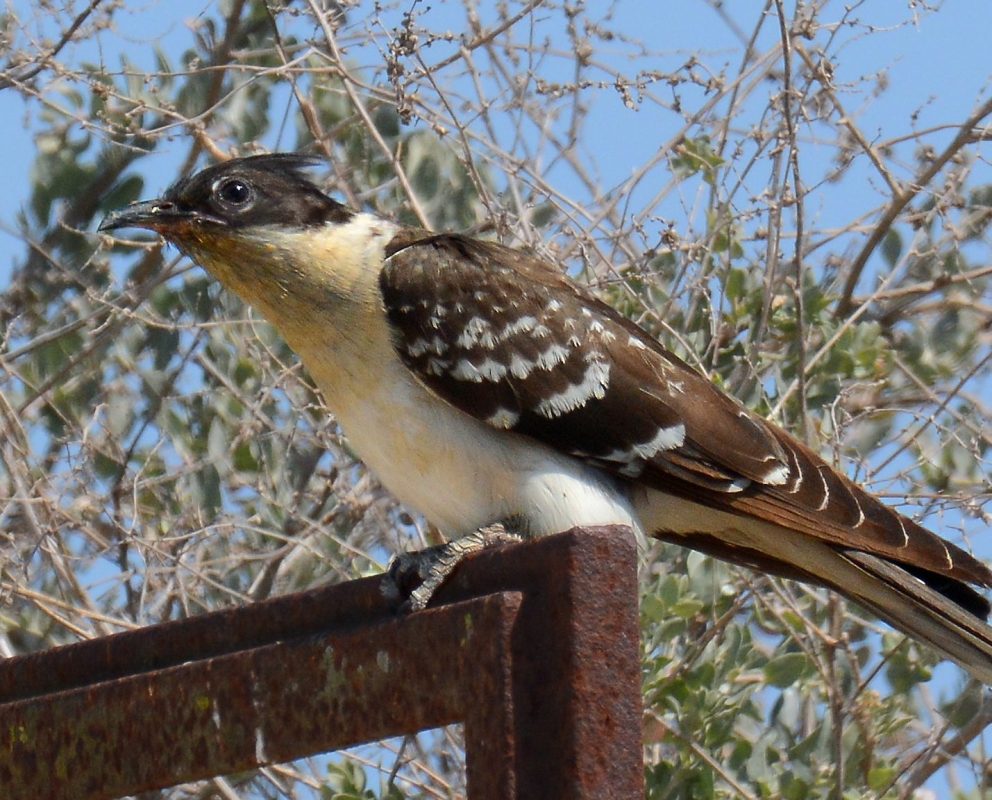I have been coming to Gran Alacant for nearly ten years now, and in that time there have been several changes, not least in the Clot itself. Improved conservation measures have increased the biodiversity, particularly in the last two or three years, and we are seeing species which have previously been rare or completely absent returning to the area.
Of course, it is not just these improvements which leads to changes in wildlife populations, as numbers naturally fluctuate from year to year. Last year, for instance, it seemed that there were far fewer of the gaudy Bee-eaters around until late summer, when birds which had bred elsewhere gathered in their hundreds to our corner of Spain.
This year, the change seems to be in the numbers of Great Spotted Cuckoos – at the beginning of May there seemed to be several birds in our area, including one in the Clot, whereas in previous years they were rare or totally absent from our immediate area, preferring habitats further inland.
Great Spotted Cuckoo? You may be wondering if this is the same bird as the well-known Cuckoo which makes one of the traditional sounds of springtime. No it isn’t, but it is a related bird, and yes, this one does lay its eggs in other birds nests. The Great Spotted Cuckoo specialises in Magpie parasitism, but the big difference between this and the common Cuckoo is that the young bird does not kick the Magpie chicks out of the nest, and the Magpies will often raise a full brood including the interloper.
You might think this is a bit of a cheek, but there is one known benefit to the Magpies – and that it that the baby Great Spotted Cuckoo emits a noxious smell which can put off any predators, thus protecting both chick species. Of course, in hard times not all the chicks may fledge, and the Cuckoo chick will win out over the Magpie chicks because of their greater strength.
Unlike the common Cuckoo, this is a noisy exhibitionist of a bird, and if there is one around you will know all about it! It has a very harsh call with rattles and trills, and flies about showing off it’s long tail and distinctive plumage. It is a very rare bird in Britain, but in Spain it can be found wherever there are Magpies or other crow-sized birds – my photo was taken in the countryside around La Marina last month..
The Spanish name is Crialo Europeo, which is odd as the word comes from the Spanish root of criar – which means to raise or bring up – the one thing this bird doesn’t do for its offspring!
You can see more photographs of birds from our area by visiting www.marketheridge.smugmug.comwww.marketheridge.smugmug.com
See you next month.
Mark



